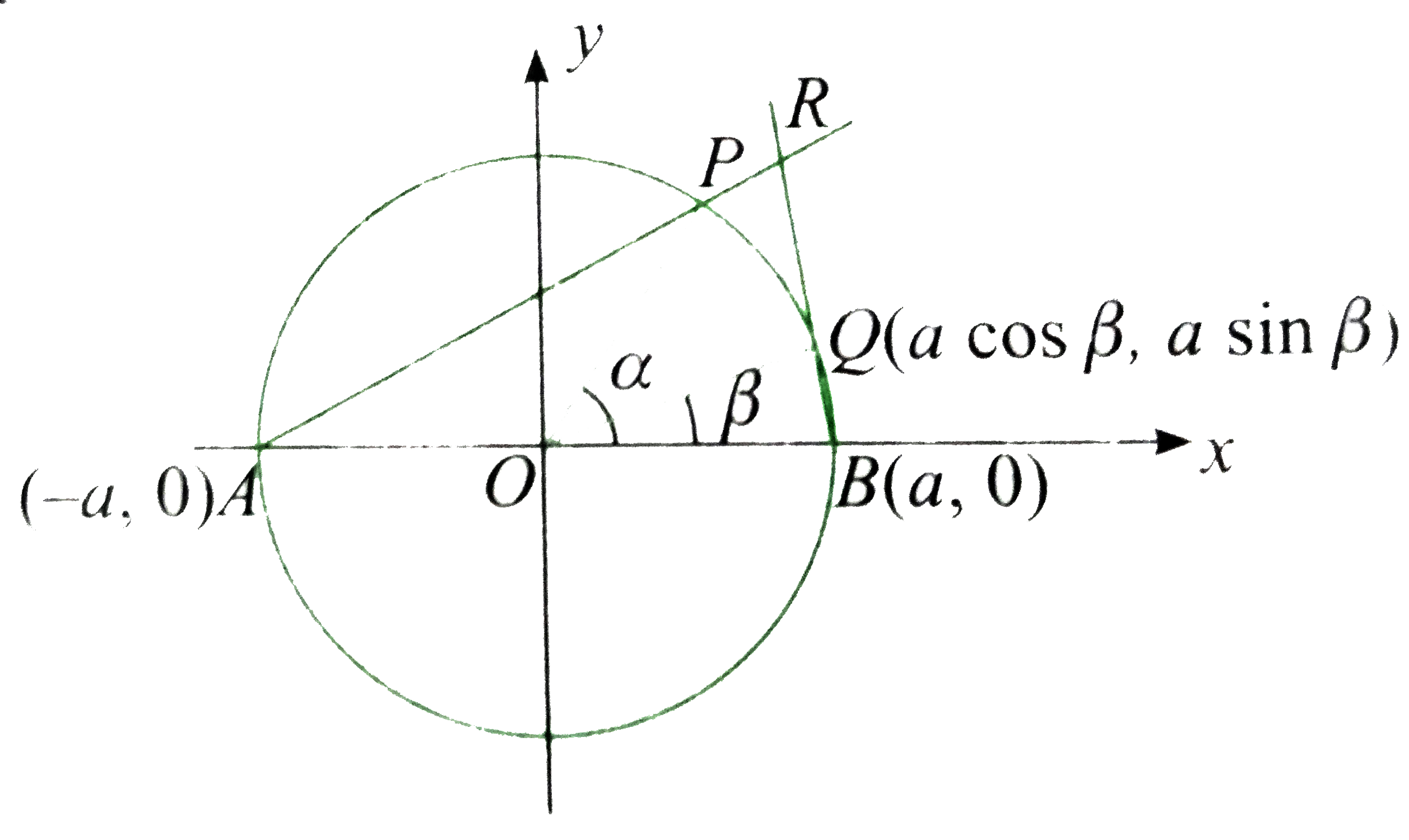A circle with center at the origin and radius equal to a meets the axis of x at AandB.P(α) and Q(β) are two points on the circle so that α−β=2γ , where γ is a constant. Find the locus of the point of intersection of AP and BQ.
Video Solution
Text Solution
Let

The coordinates of A are ( -a,0) and that of P are (acosα,asinα).
Therefore, the equation of AP is
y=asinαa(cosα+1)(x+a)
or y=tan.α2(x+a) (1)
Similarly, the equationof BQ is
y=asinβa(cosβ−1)(x−a)
or y=−cot.β2(x−a) (2)
We now eliminate α and β from (1) and (2). Therefore,
tan.α2=ya+x,tan.β2=a−xy
Now, α−β=2γ⇒γ=α2−β2
∴tanγ=tan.α2−tan.β21+tan.α2tan.β2=ya+x−a−xy1+ya+x.a−xy
or tanγ=y2−(a2−x2)(a+x)y+(a−x)y
=x2+y2−a22ay
or x2+y2−2aytanγ=a2
|
Updated on:21/07/2023
Topper's Solved these Questions
- BOOK - CENGAGE ENGLISHCHAPTER - CIRCLE EXERCISE - Examples13videos
CIRCLE
- BOOK - CENGAGE ENGLISHCHAPTER - CIRCLE EXERCISE - CONCEPT APPLICATION EXERCISE 4.11videos
CIRCLE
- BOOK - CENGAGE ENGLISHCHAPTER - BINOMIAL THEOREMEXERCISE - Matrix4videos
BINOMIAL THEOREM
- BOOK - CENGAGE ENGLISHCHAPTER - CIRCLESEXERCISE - Comprehension Type8videos
CIRCLES
Similar Questions
Knowledge Check
- Question 1 - Select One
The distance of the point P (α,β,γ) from x-axis is
A|α|B√α2+β2C√β2+γ2D√γ2+α2 - Question 2 - Select One
The distance of the point P(α,β,γ) from y-axis is
AβB|β|C|β|+|γ|D√γ2+α2 - Question 3 - Select One
The reflection of the point P(α,β,γ) in the xy-plane is
A(α,β,0)B(0,0,γ)C(−α,−β,γ)D(α,β,−γ)
Find the the image of the point (α,β,γ) with respect to the plane 2x+y+z=6.
View SolutionI If a point (α,β) lies on the circle x2+y2=1 then the locus of the point (3α.+2,β), is
View SolutionIf α,β,γ are the roots of x3+x2−5x−1=0 then α+β+γ is equal to
View SolutionS is a circle having the center at (0,a) and radius b(b<a). A variable circle centered at (α,0) and touching the circle S meets the X-axis at MandN . Find the a point P on the Y-axis, such that ∠MPN is a constant for any choice of α
View SolutionLet x−ysinα−zsinβ=0,xsinα+zsinγ−y=0 and xsinβ+ysinγ−z=0 be the equations of the planes such that α+β+γ=π/2 (where α,β and γ≠0). Then show that there is a common line of intersection of the three given planes.
View Solution

